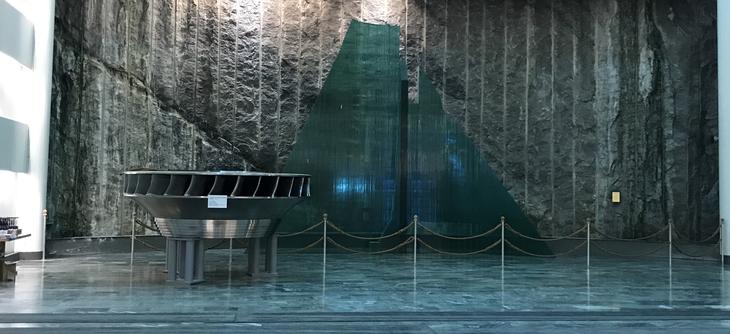Tonstad

© Skagerak Kraft
Tonstad Power Plant is located at the northern end of the Sirdalfjord, near the town of Tonstad in Vest-Agder county. Tonstad Power Plant is Norway’s largest in terms of production.
The first two 160 MW generators were put into operation in 1968, and two generators of the same size were put into operation in 1971. The fifth and final 320 MW generator was put into operation in 1988, and was officially opened by the Norwegian Crown Prince and Crown Princess at the time, Harald and Sonja. All generators have Francis turbines. The waterfall height is 450 metres.
The intake reservoir for the power plant is Hornstølvatnet, and both the Sira and Kvina watercourses are affected by the development. From the power plant, water is led out into Sirdalsvatn lake and further along in a canal to Lundevatn and to Åna-Sira Power Plant, which is furthest downstream in the watercourse, nearly by the coast. Parts of the regulation area for these power plants cross into both Bygland and Kvinesdal municipalities.
The development of Tonstad Power Plant started as early as 1965, and in 1966, the main office for the power company Sira-Kvina kraftselskap was established in Tonstad in Sirdal municipality, where a construction administration was also set up. This large development involved many challenges, and new technology was therefore incorporated. Blasting of the supply tunnel to Tonstad Power Plant involved a number of unique issues, because a weak area in the rock needed to be reinforced using a new freezing technique, to avoid the masses collapsing.
Around five million cubic metres of solid rock was blasted out and used to build the dam, roads and thresholds. The 60 thresholds in the watercourses are designed to counteract the impact of reduced water flow in certain stretches of the river as a result of the regulation.
Owner: Sira-Kvina Kraftselskap DA (Lyse Produksjon AS 41.1%, Statkraft 32.1%, Skagerak Kraft AS 14.6%, Agder Energi AS 12.2%).











